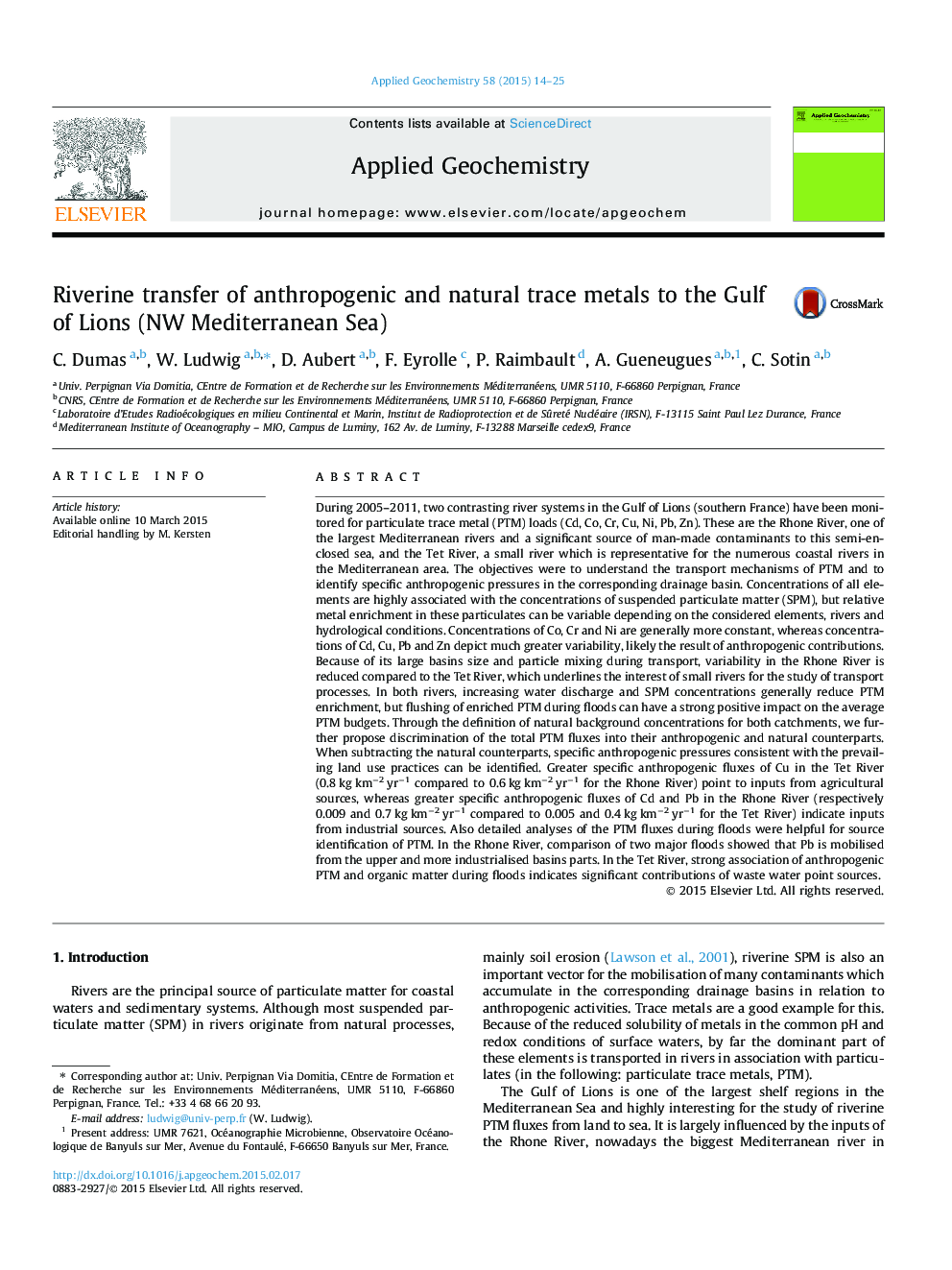| Article ID | Journal | Published Year | Pages | File Type |
|---|---|---|---|---|
| 4435651 | Applied Geochemistry | 2015 | 12 Pages |
•Unique data set on PTM fluxes in rivers.•New approach for the detection of natural backgrounds in river basins.•Anthropogenic PTM fluxes indicate specific land use practices.•Initial flushing of anthropogenic PTM during floods in coastal rivers.•Identification of specific PTM source regions in the Rhone River.
During 2005–2011, two contrasting river systems in the Gulf of Lions (southern France) have been monitored for particulate trace metal (PTM) loads (Cd, Co, Cr, Cu, Ni, Pb, Zn). These are the Rhone River, one of the largest Mediterranean rivers and a significant source of man-made contaminants to this semi-enclosed sea, and the Tet River, a small river which is representative for the numerous coastal rivers in the Mediterranean area. The objectives were to understand the transport mechanisms of PTM and to identify specific anthropogenic pressures in the corresponding drainage basin. Concentrations of all elements are highly associated with the concentrations of suspended particulate matter (SPM), but relative metal enrichment in these particulates can be variable depending on the considered elements, rivers and hydrological conditions. Concentrations of Co, Cr and Ni are generally more constant, whereas concentrations of Cd, Cu, Pb and Zn depict much greater variability, likely the result of anthropogenic contributions. Because of its large basins size and particle mixing during transport, variability in the Rhone River is reduced compared to the Tet River, which underlines the interest of small rivers for the study of transport processes. In both rivers, increasing water discharge and SPM concentrations generally reduce PTM enrichment, but flushing of enriched PTM during floods can have a strong positive impact on the average PTM budgets. Through the definition of natural background concentrations for both catchments, we further propose discrimination of the total PTM fluxes into their anthropogenic and natural counterparts. When subtracting the natural counterparts, specific anthropogenic pressures consistent with the prevailing land use practices can be identified. Greater specific anthropogenic fluxes of Cu in the Tet River (0.8 kg km−2 yr−1 compared to 0.6 kg km−2 yr−1 for the Rhone River) point to inputs from agricultural sources, whereas greater specific anthropogenic fluxes of Cd and Pb in the Rhone River (respectively 0.009 and 0.7 kg km−2 yr−1 compared to 0.005 and 0.4 kg km−2 yr−1 for the Tet River) indicate inputs from industrial sources. Also detailed analyses of the PTM fluxes during floods were helpful for source identification of PTM. In the Rhone River, comparison of two major floods showed that Pb is mobilised from the upper and more industrialised basins parts. In the Tet River, strong association of anthropogenic PTM and organic matter during floods indicates significant contributions of waste water point sources.
